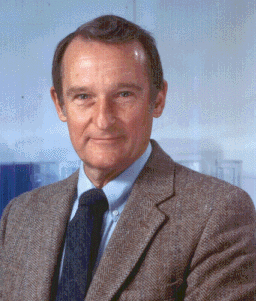
In Honor of Seymour Roger Cray (September 26, 1925 - October 5, 1996)
Attending the University of Minnesota from 1967 - 1971 gave me early access to
state-of-the-art computers of that era, since both Control Data Corporation
and Cray Research made their homes nearby. A visionary pioneer in computer design
in those early years of supercomputers was
Seymour Cray,
responsible for the design of several of the world's fastest computers.
Seymour, a fellow EE graduate from the U of M, always advocated that
"simplicity was the key to speed."
His noteworthy engineering achievements include the first computer I ever wrote programs for,
the CDC 6600, in 1967 at the U of M Computer Center.
Mr. Cray died in an
automobile accident
in 1996, and his loss is still mourned by many:
The Charles Babbage Institute at the U of M created the
Cray Research Virtual Museum
that highlights the many important contributions by Seymour Cray and includes photos of several
of the computers he designed. Unfortunately the original exhibit has been removed,
but the above link to the Internet Archive Wayback Machine leads to much of the same material.
Here's a great photo
of Mr. Cray seated in front of serial #1 of the CDC 1604, taken circa 1961.
And here's a couple of photos (photo #1,
photo #2) of what I believe to be a pre-production version of
the CDC6600. (Note the photo of the molecular structure of DNA in the upper left of
photo #1. My research lab has been developing software
for interactively visualizing and analyzing bio-molecular structures like DNA
for more than 50 years. You can learn more about our work here:
www.rbvi.ucsf.edu.)
If you'd like to know what it was like to design a supercomputer in the late 1960's
here's a great book by James Thorton:
Design of a Computer - The Control Data 6600
(1970).
The Forward by Seymour Cray
is especially enlightening as it hints at
vector supercomputing
that would predominant supercomputer design in the following decades.
(Originally posted Jan 24, 1997. Updated Apr 15, 2020.)

